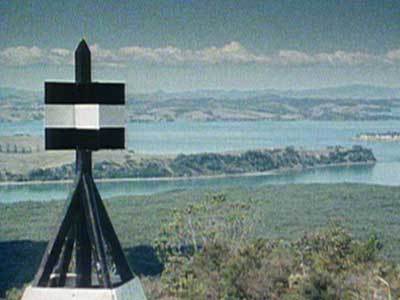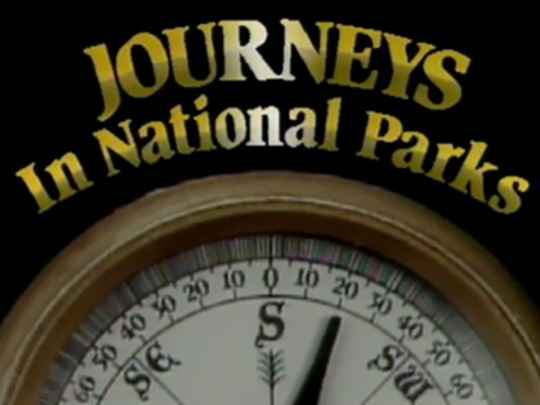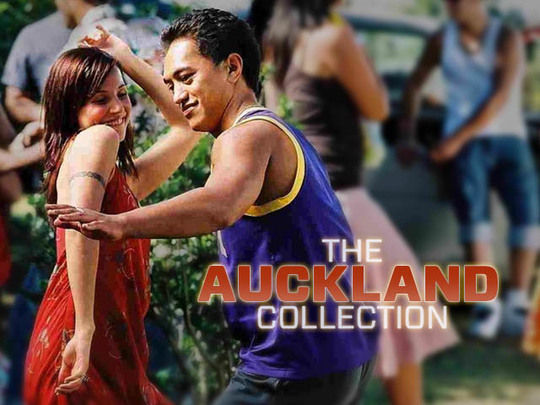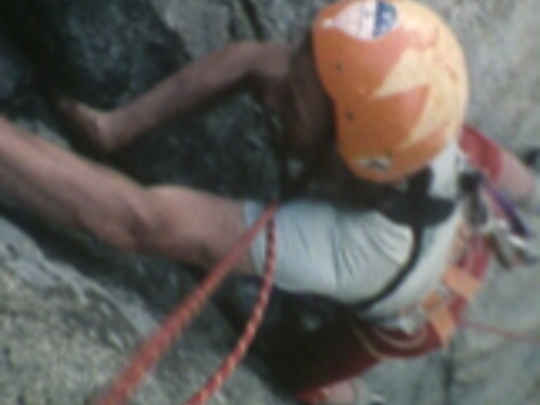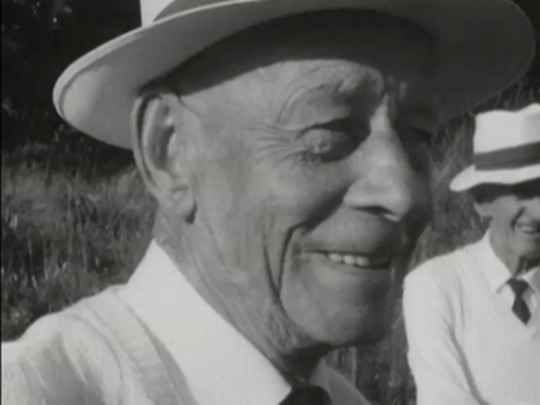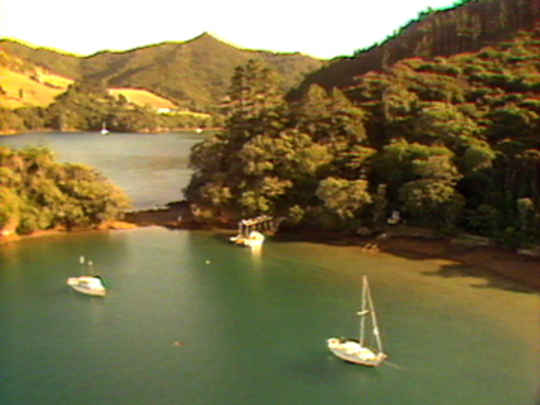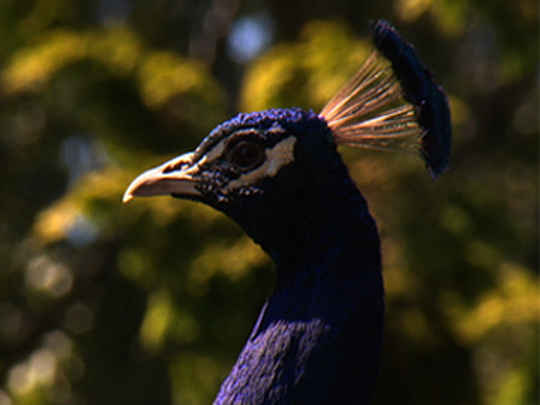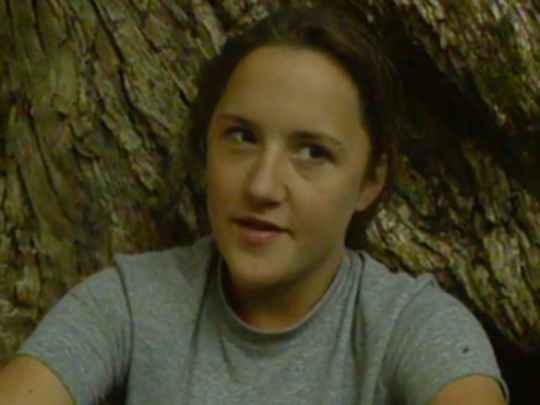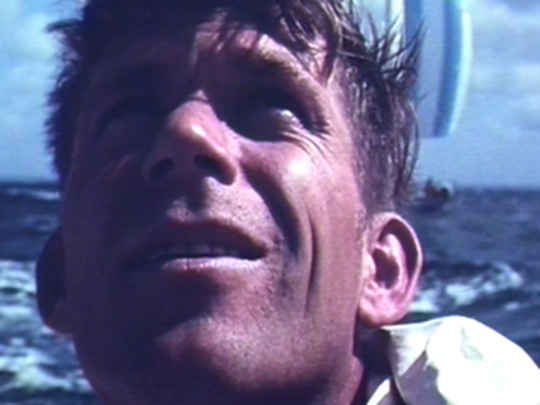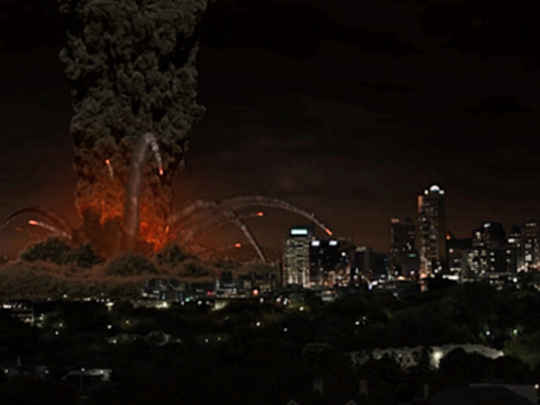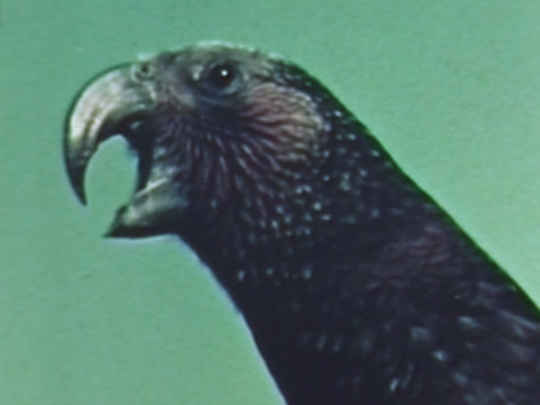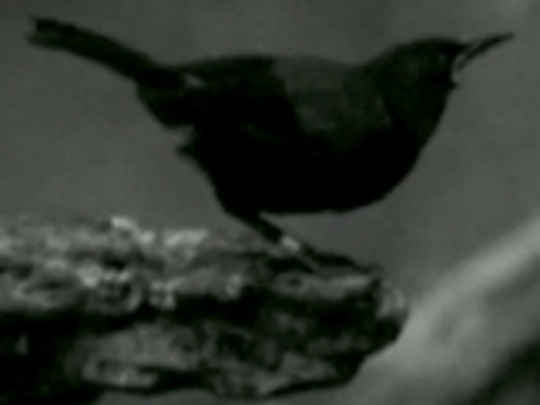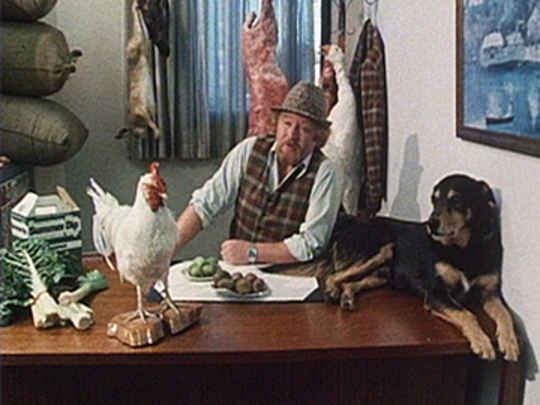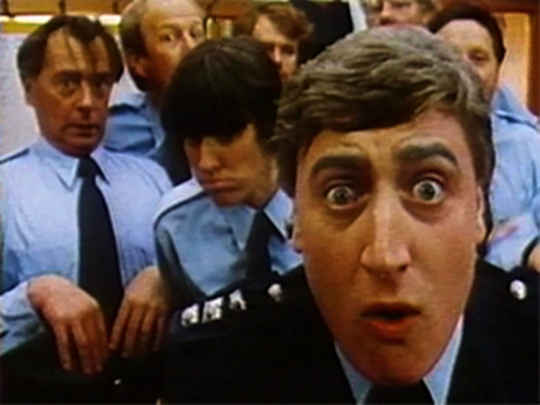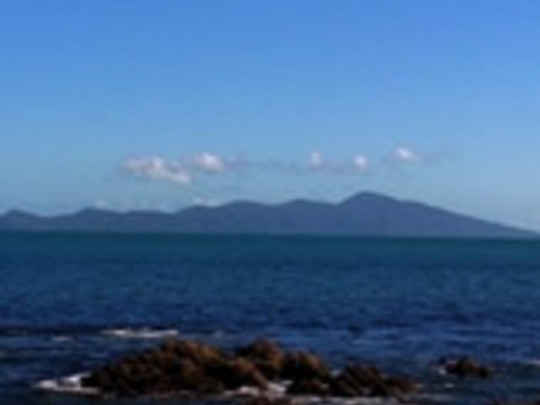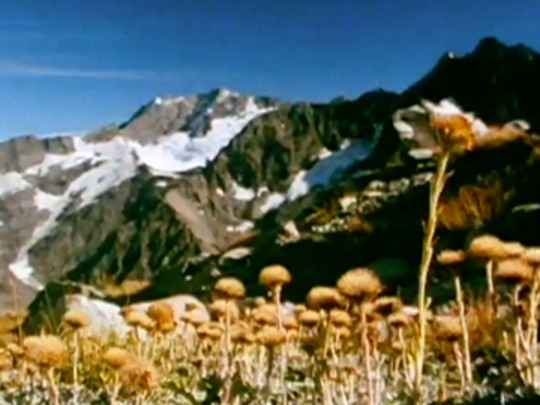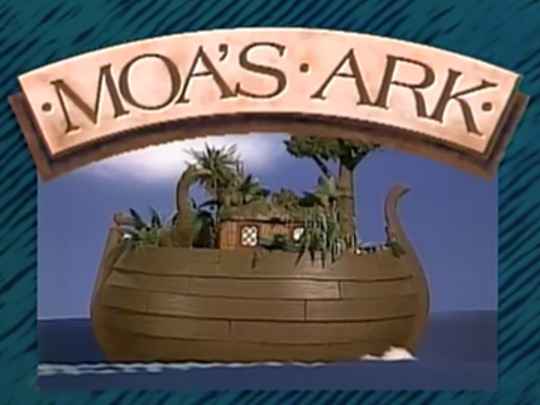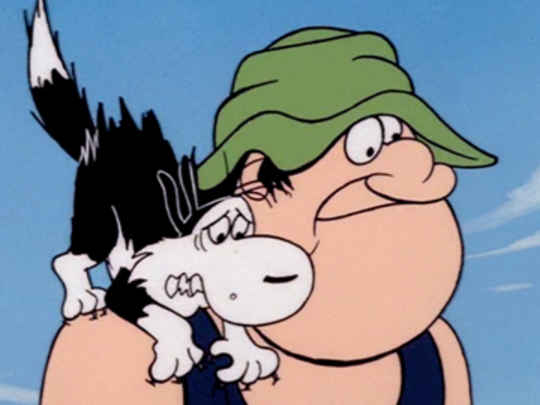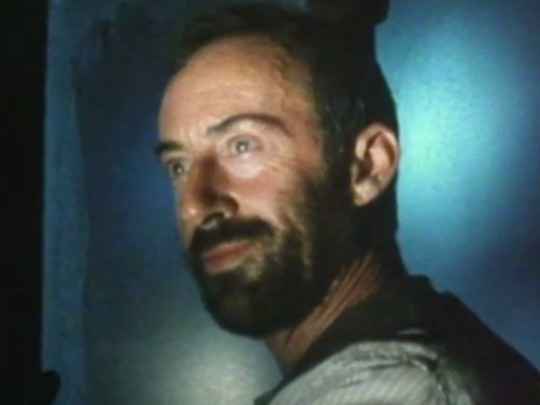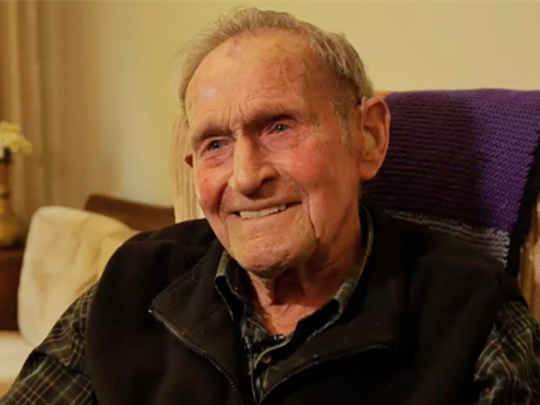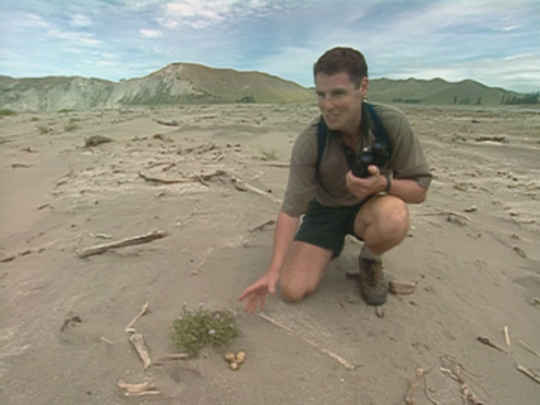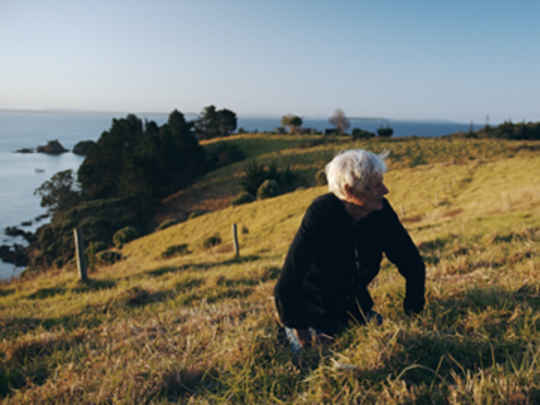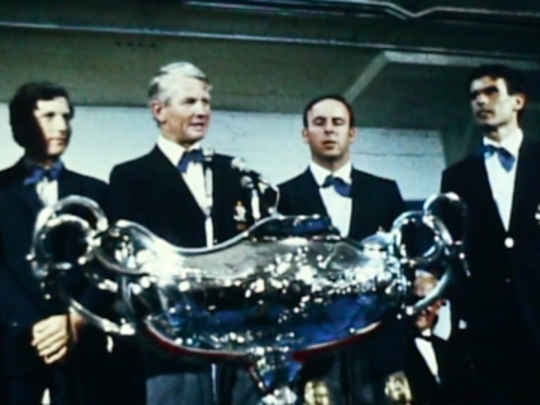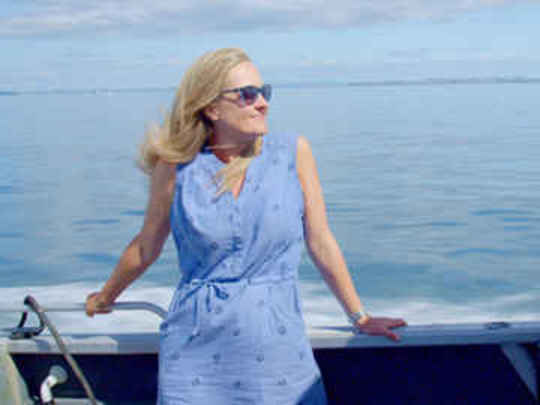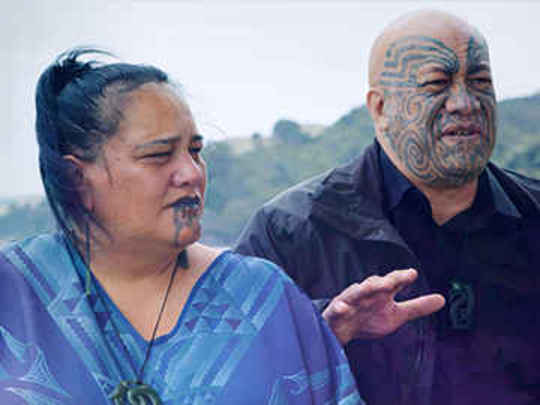The first of five parts of this full length episode of Journeys in National Parks.
The second of five parts of this full length episode of Journeys in National Parks.
The third of five parts of this full length episode of Journeys in National Parks.
The fourth of five parts of this full length episode of Journeys in National Parks.
The fifth of five parts of this full length episode of Journeys in National Parks.
The credits for this episode.
Journeys in National Parks: Hauraki Gulf
Television (Full Length) – 1987
Series Perspective
A stand of Kahikatea sway and creak, their tall buttressed trunks stretching up to the sky. Westland National Park, explains the late Geoff Park (Nga Uruora) in the episode on the park, retains what New Zealand has lost elsewhere – forest that stretches from the sea to the mountains. Journeys in National Parks instils a deep appreciation of the sublime and unique settings this country has on offer. But it does not prostrate itself at the feet of utopian Nature; rather, this series focuses on people and their relationship with the land. As he journeys, series presenter and writer Peter Hayden is joined by scientists, kaumatua, park wardens and everyday park users; their stories and perceptions provide many ways to understand our connection with the land.
Made by Natural History New Zealand (then the Natural History Unit and part of TVNZ) and the National Parks Centenary Commission, this series of documentaries was produced by Neil Harraway. Filmed throughout 1986 and 1987, it was first screened in September 1987 to coincide with the centennial of the establishment of New Zealand’s first national park, Tongariro. Gifted by Te Hue Hue Tukino, chief of Tuwharetoa, in 1887, Tongariro was the fourth national park to be established worldwide. Fiordland, Te Urewera, Aoraki/Westland and Hauraki Gulf Marine Park comprise the other four episodes of the series.
The series took its crew to some of our most isolated locations and more lofty altitudes. Hayden’s personal highlight was climbing Hochstetter Dome with the legendary mountaineer Harry Ayres, who coached Sir Edmund Hillary. Close behind this experience was transferring rare wattlebirds, tieke (saddlebacks) from Cuvier Island to Little Barrier Island “with Auckland’s lights twinkling in the background.” However, filming in remote and inaccessible spots wasn’t always a happy experience; Hayden describes the crew being afflicted with gut-churning seasickness on the boat trip from Doubtful to Dusky Sound.
Different directors bring different approaches to each park. Barry Barclay directed Journeys in National Parks - Te Urewera, applying his philosophy of indigenous filmmaking he called “fourth cinema”; images are given by the people, not taken by the filmmakers. Barclay’s camera is a guest and, in order to be as unobtrusive as possible, long lenses were used in interviews; this affords the episode a distinct, cinematic aesthetic. Tuhoe have strong spiritual and historical ties with the Ureweras and the formation of Te Urewera National Park changed aspects of this relationship: “we elected to tell the contemporary story of the park through their [Tuhoe] eyes” writes Barclay in his essay “Amongst Landscapes.” This approach was controversial: “The documentary was barely five minutes into transmission before complaints were being phoned in. By the end credits, I think we had some sort of complaints record.”
While directors Michael Hacking (Fiordland, Hauraki), Michael Single (Westland/Aoraki) and Neil Harraway (Tongariro te Maunga) do not have as strident a political approach to their work, respect and dignity are the series’ common ground. Thematically, the preservation verses access conundrum is explored. With its proximity to Auckland, the swift changing face of the Hauraki Marine Park brings this issue into sharp relief. This episode features a group of schoolchildren, highlighting a new generation’s role as caretakers of the environment. The series radiates a genial, down-to-earth modesty. In Westland/Aoraki Hayden and glaciologist Trevor Chin walk down Tasman glacier. Chin describes the inner workings of this crawling ice (glaciers have snouts!). “I like most glaciers,” says Chin, “and I have a pet glacier on the West Coast ... It’s up the end of an obscure valley, pointing in an obscure direction.”
In Journeys the mythological, spiritual and historical are interwoven with the natural. “There are stories, deep stories that go with just about every bit of landscape” says Hayden. In Tongariro te Maunga he traverses the (now extremely popular) mountain crossing with Max Mariu (a priest), Jim Cole (a volcanologist), Russell Montgomery (a park ranger) and the young Tumu Te Hue Hue. It was the first time Tumu, now paramount chief of Ngāti Tuwharetoa, had been up the mountain; the power of his experience is clear and moving.
In Fiordland we learn of how the god Tu-te-raki-whanoa crafted the fiords: faced with the sheer cliff of an inhospitable coastline his took out his adze and carved inland “so the sea might run in and there’d be quiet places for people to live.” The Dusky Sound leg of this episode is informed by the diary of Georg and Johann Forster, the father and son naturalists on board Cook’s Resolution. The exploits of surveyor Charlie ‘Explorer’ Douglas and his dog are woven through Westland. This approach of taking multiple paths didn’t please everyone. Journeys was labelled “boring and irrelevant” by prominent ecologist Gerry McSweeny. But it was generally well-recieved and at the 1988 Listener Film and TV Awards Hayden won Best Writer in a Non-Drama Category for the series.
The 1980s origin of the series is exposed only by the sweaters and jumpers of Tongariro te Maunga, the extremely short and colourful shorts of Hauraki, and the extravagant facial hair and electronic symphonic score of Aoraki.
Twenty two years on Journeys maintains striking relevance. Looking back, Hayden comments that the series was probably ahead of its time: “It’s probably more in line with the things Marcus Lush is doing now. He goes into Antarctica and does a bit of geology and this that and the other, but he also gets under the skin through the eyes of the people, the experience of the people.” However, Hayden notes that the pace and depth of thinking that distinguishes this series would be difficult to achieve in a modern production environment: “Journeys was quite non-commercial and leisurely… it’s a more a once-over-lightly these days.”
